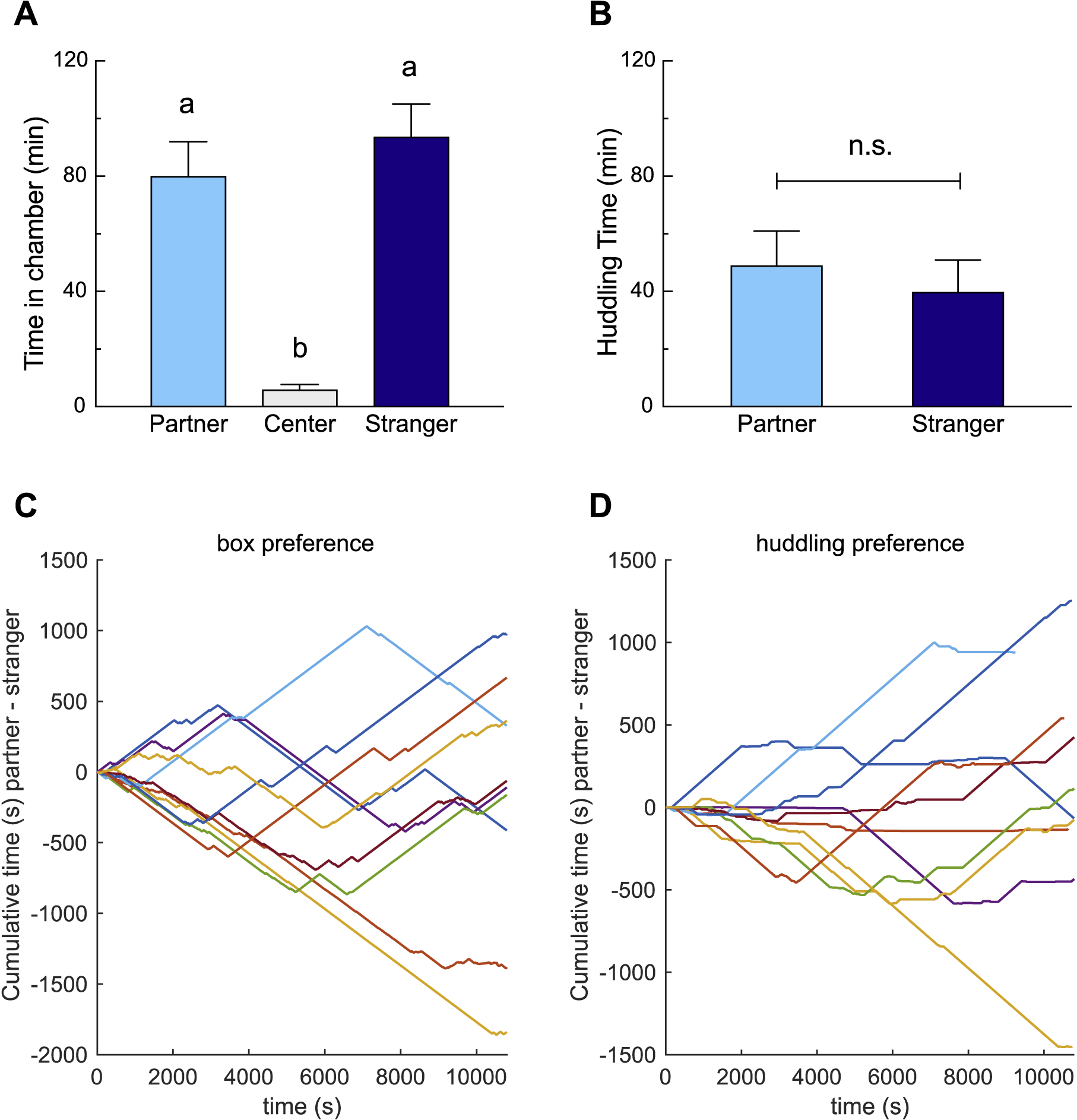Figure 1.

Partner preference test behavior. A. Degus spent significantly more time in the social chambers than in the center, unoccupied chamber (each p<0.0001). Time in the social chambers did not differ from each other. B. Degus huddled extensively with both partners and strangers. C. Cumulative distribution of chamber preference (partner chamber-stranger chamber) over the 3h test. D. Cumulative distribution of social preference (partner huddling-stranger huddling) over 3h. Individual preferences were heterogenous: some degus huddled principally with the partner or stranger, while others huddled with both individuals. Different letters denote groups that are significantly different (Tukey’s test).
